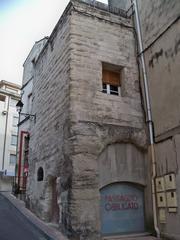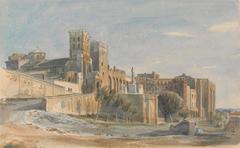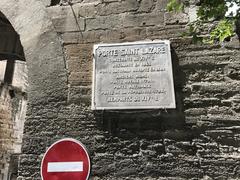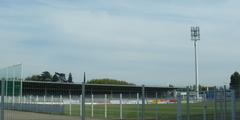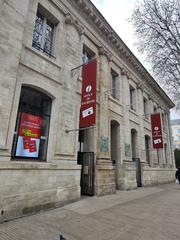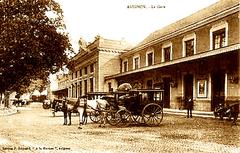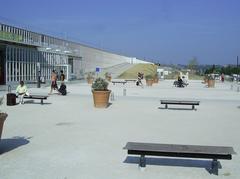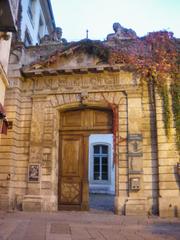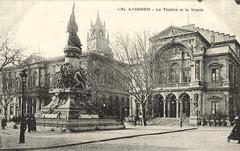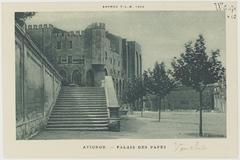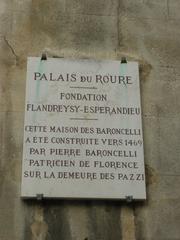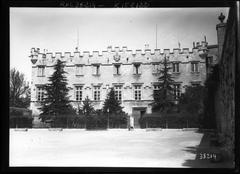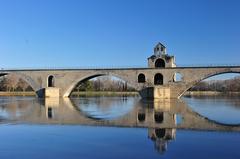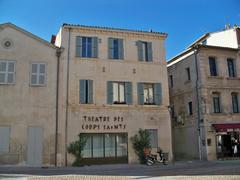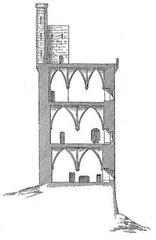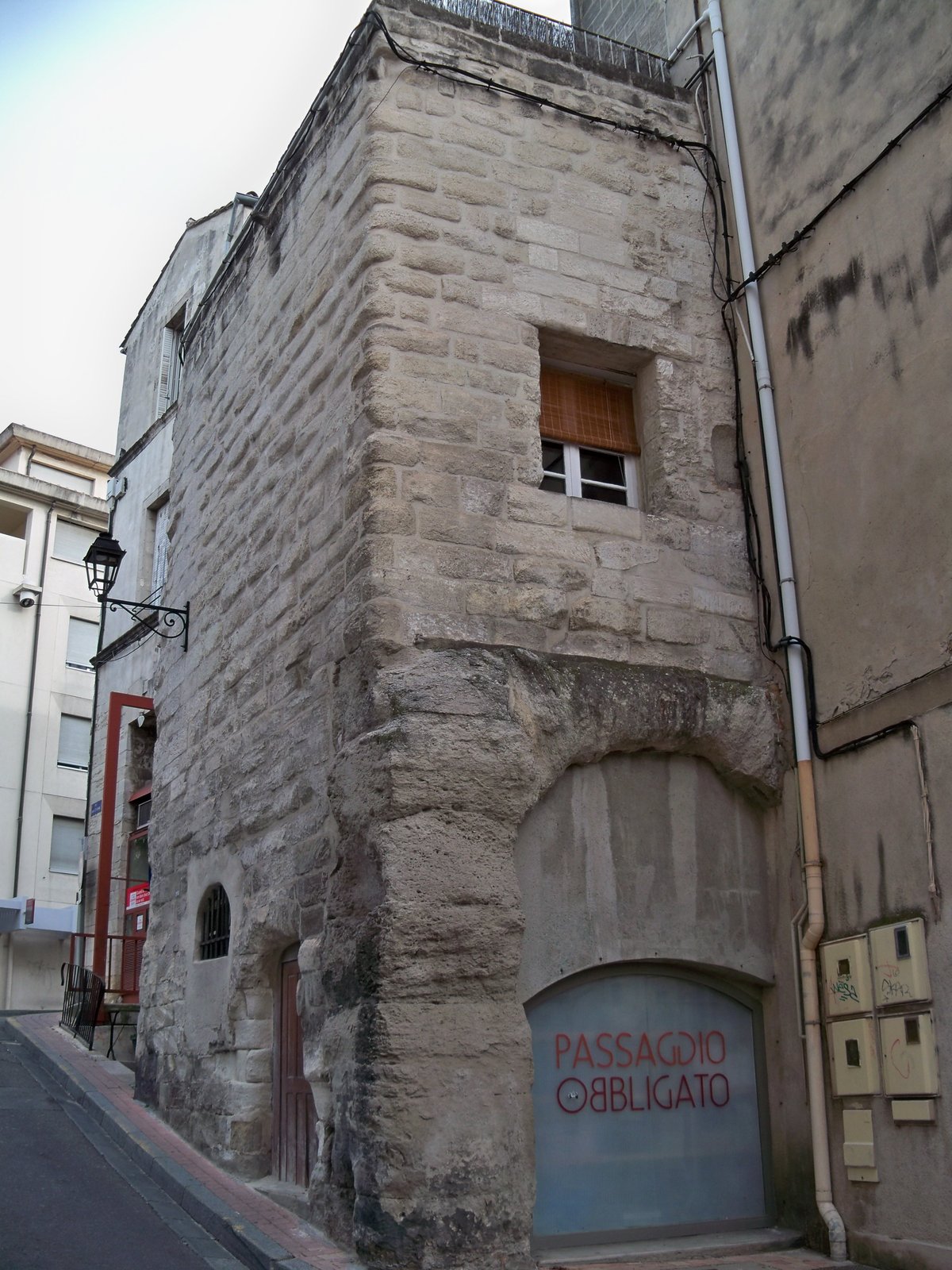
Tour de la Madeleine Avignon: Visiting Hours, Tickets, and Travel Guide
Date: 14/06/2025
Introduction
Nestled within the medieval heart of Avignon, France, the Tour de la Madeleine (Ancienne) stands as an enduring testament to the city’s rich past and its pivotal role during the 14th century as the seat of the Papacy. Built in the 13th and 14th centuries as part of Avignon’s extensive defensive ramparts, this Gothic tower exemplifies both the military and symbolic prowess of the city during its era of greatest influence. While the Palais des Papes and Pont Saint-Bénézet are Avignon’s most famous landmarks, the Tour de la Madeleine offers visitors a more intimate connection to the city’s fortified history and its ongoing significance as a UNESCO World Heritage site.
This guide provides all the essential information for appreciating the Tour de la Madeleine—its historical background, architectural features, visiting hours, ticketing, accessibility, nearby attractions, and practical tips. For further planning support, consult the Avignon Tourism Office, Monumentum, and the UNESCO World Heritage database.
Historical Background and Cultural Significance
Medieval Origins and the Avignon Papacy
Avignon’s historical prominence is closely linked to its role as the seat of the Catholic papacy in the 14th century. The relocation of the papal court to Avignon in 1309 sparked a period of architectural and cultural flourishing. The city’s population swelled, and immense resources were devoted to the construction of religious and defensive structures (France Travel Blog; The Crazy Tourist). The Tour de la Madeleine was built as part of the city’s formidable ramparts, which included 39 towers and seven gates, designed to protect Avignon from external threats (See Provence).
Architectural Features
Constructed from local limestone, the Tour de la Madeleine displays classic elements of medieval military architecture: thick walls, narrow arrow slits for archers, and crenellated parapets. Its verticality and robust design reflect the Gothic style of the period and harmonize with nearby landmarks such as the Palais des Papes (GPSmyCity; Cultured Voyages).
Preservation and UNESCO World Heritage Status
The Tour de la Madeleine forms part of Avignon’s UNESCO World Heritage-listed historic center, recognized in 1995 for its exceptional testimony to a significant period in European history (UNESCO World Heritage). Ongoing conservation efforts ensure the tower retains its historical character, even as it remains a living symbol for the local community (Monumentum).
Visiting the Tour de la Madeleine
Location and Access
- Address: 28 rue Petite-Fusterie, 84000 Avignon, France
- Access: Centrally located in Avignon’s old town, the tower is easily reached on foot from the Palais des Papes and Place de l’Horloge. Avignon Centre train station is about a 15-minute walk, and local buses serve the area (Monumentum).
Visiting Hours
- Exterior Viewing: The Tour de la Madeleine is a privately owned structure. Its exterior can be admired year-round, at any time of day.
- Interior Access: The tower is generally closed to the public. Limited interior visits may be possible during the annual European Heritage Days each September (POP Culture Gouv).
Tickets
- Exterior: No ticket or fee is required to view the tower from the street or ramparts.
- Special Events: Free or ticketed access may be offered for guided tours or special openings during heritage events (Monumentum).
Accessibility
The area around the tower features cobblestone streets and narrow medieval alleys. While the ramparts walk is mostly flat and accessible, some uneven surfaces and steps may be encountered. Visitors with mobility challenges should consult the Avignon Tourism Office for detailed accessibility information.
Enhancing Your Visit
Guided Tours
Although the Tour de la Madeleine is not typically open for interior visits, many walking tours of Avignon’s medieval center include the tower in their route, offering historical context and architectural insights (Avignon Tourisme; Fearless Female Travels). Self-guided maps are available for independent exploration.
Nearby Attractions
- Palais des Papes: The largest Gothic palace in Europe and a former papal residence (Touropia).
- Pont Saint-Bénézet: The iconic, partially ruined medieval bridge.
- Rocher des Doms: Scenic public gardens with panoramic city views.
- Collection Lambert: Contemporary art museum in an 18th-century mansion.
Amenities and Travel Tips
- Dining: Numerous cafés and restaurants are located within walking distance. Notable options include La Mirande (Michelin-starred), La Fourchette, and Fou de Fafa (The Travel Folk).
- Markets: Enjoy the Provençal market on Thursdays and the Saturday brocante (flea market).
- Photography: Early morning and late afternoon provide the best light for photography.
Special Events and Community Engagement
The Tour de la Madeleine’s role in local culture is highlighted during the annual European Heritage Days, when special visits and events may allow limited access to the tower’s interior (Monumentum). The area also comes alive during the Avignon Theater Festival each July, and other community festivals and markets throughout the year.
Frequently Asked Questions (FAQ)
Q: Can I enter the Tour de la Madeleine?
A: The interior is not regularly open, but special access may be granted during European Heritage Days.
Q: Is there a ticket fee to visit the tower?
A: No, viewing the exterior is free; guided tours of the city may include the tower in their route.
Q: What are the best times to visit Avignon?
A: Late spring (April–June) and early autumn (September–October) offer pleasant weather and fewer crowds.
Q: Are guided tours available?
A: Yes, city walking tours often include the tower in their itinerary.
Q: Is the ramparts walk accessible?
A: Most of the walk is flat, but some sections have uneven surfaces; check with the tourism office for accessible routes.
Q: What else should I visit nearby?
A: Palais des Papes, Pont Saint-Bénézet, Rocher des Doms, and Les Halles Market are all recommended.
Practical Tips
- Language: French is the official language; English is widely spoken in tourist areas.
- Currency: Euro (€).
- Dress: Wear comfortable shoes for walking on cobblestones.
- Safety: Avignon is generally safe; take standard precautions in crowded areas.
Visuals and Media
Explore high-quality images and interactive maps of the Tour de la Madeleine on the Avignon Tourism Office site. Alt text such as “Tour de la Madeleine Avignon medieval tower” helps with accessibility and SEO. For virtual tours, check official tourism platforms.
Responsible Tourism
As the Tour de la Madeleine is a protected historic monument and privately owned, please respect barriers and signage, keep noise to a minimum, and dispose of litter responsibly.
Summary
The Tour de la Madeleine is a striking emblem of Avignon’s medieval heritage, offering visitors a tangible connection to the city’s papal era and its fortified past. While interior visits are limited, the tower’s impressive exterior and strategic location within Avignon’s UNESCO-listed center make it an essential stop for anyone interested in the history, architecture, and culture of southern France. Enhance your trip by exploring nearby landmarks, joining a guided tour, and planning your visit for the optimal seasons of spring or early autumn. With its careful preservation and ongoing community engagement, the Tour de la Madeleine remains a vital part of Avignon’s living history (Avignon Tourism Office, UNESCO World Heritage, Monumentum).
Sources and Further Reading
- Avignon Tourism Office
- Monumentum
- UNESCO World Heritage
- GPSmyCity
- France Travel Blog
- See Provence
- The Crazy Tourist
- Cultured Voyages
- Fearless Female Travels
- The Travel Folk
- Touropia
